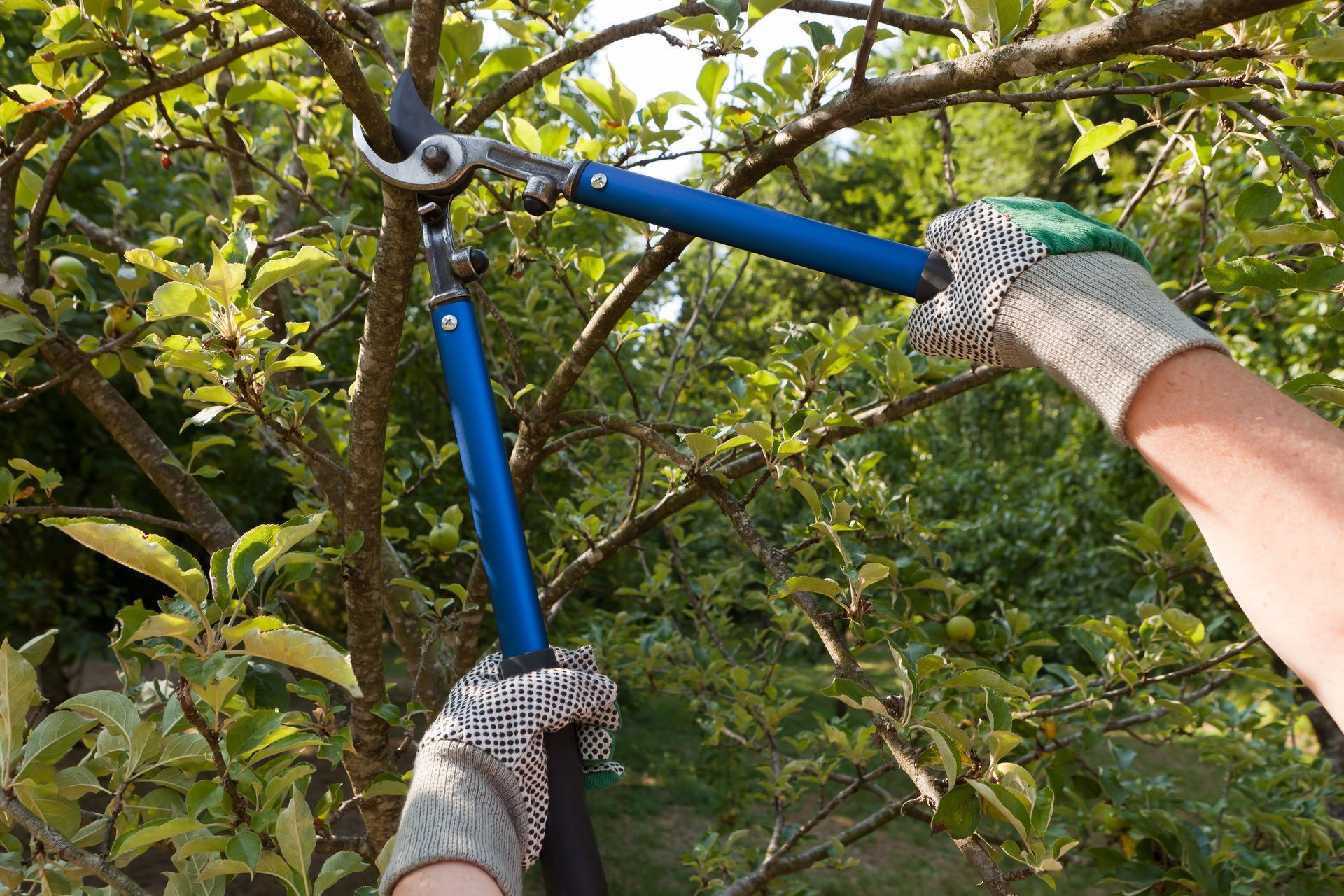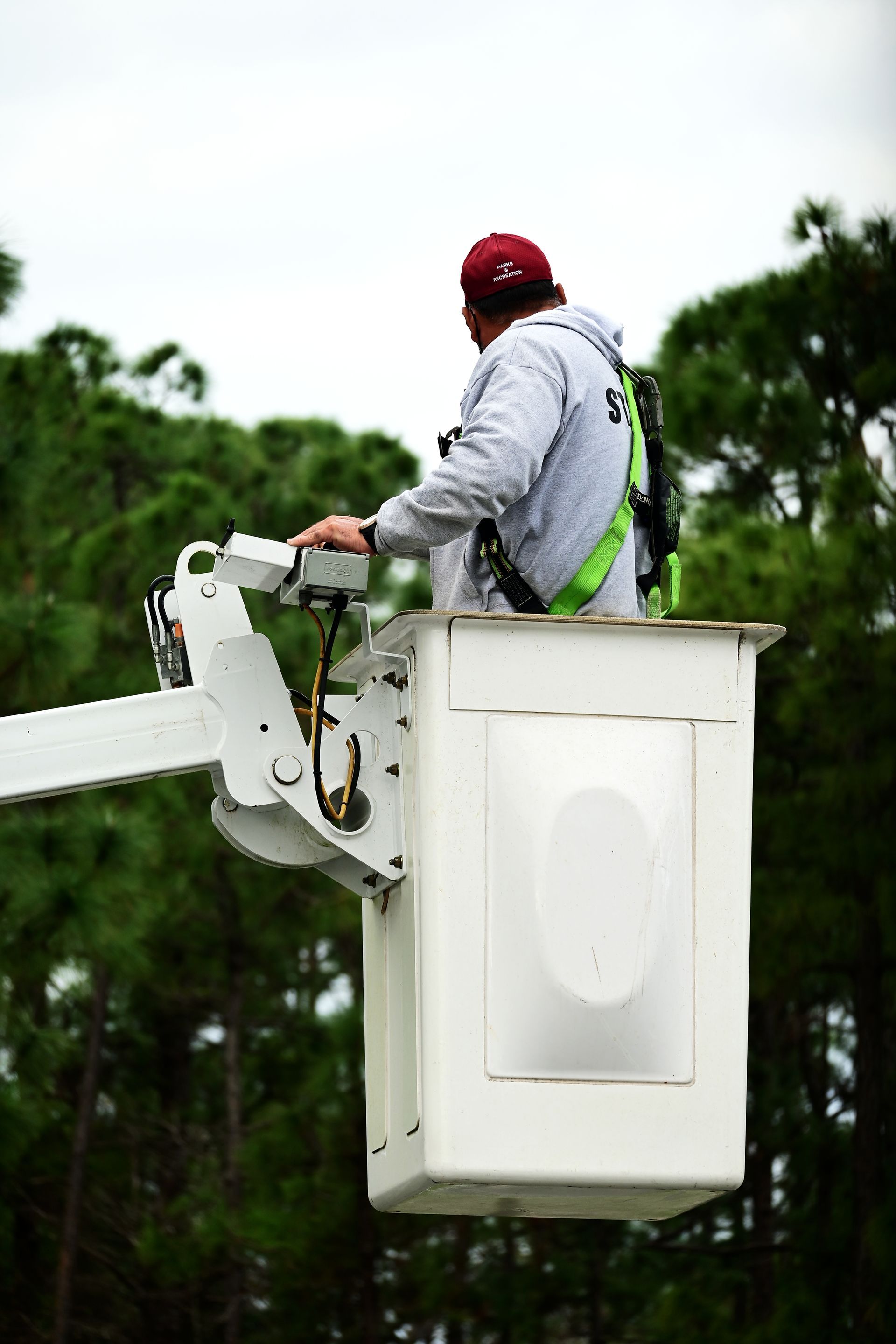
Ensuring Safety and Health: The Expert Guide to Tree Trimming, Line Clearance, and Utility Tree Care
Purpose of Tree Trimming
Tree trimming is essential for enhancing tree health and promoting safety in your landscape. Proper tree trimming maintains overall tree health by removing dead or diseased branches, improving air circulation, and encouraging natural growth patterns. Simultaneously, it plays a vital role in ensuring safety by eliminating hazards posed by overgrown or weak branches, especially during adverse weather conditions, thus preventing potential property damage, accidents, and electrical outages. In essence, tree trimming is an investment that contributes to healthier, safer, and more enjoyable outdoor environments.
Trees require trimming for a variety of reasons, encompassing aesthetics, safety, and health considerations. Firstly, from an aesthetic standpoint, tree trimming helps maintain and enhance the visual appeal of your landscape. By removing overgrown or unsightly branches, trees can be shaped to create a more pleasing and well-balanced appearance. Secondly, and perhaps more importantly, trimming is essential for safety. Overgrown or weak branches can pose significant hazards, particularly during storms or strong winds. Regular trimming minimizes the risk of branches falling and causing damage to property, vehicles, or injury to people. Lastly, tree trimming is crucial for tree health. It aids in removing dead or diseased branches that can be breeding grounds for pests and diseases, allowing the tree to allocate its resources more effectively to healthier parts, thereby prolonging its lifespan.
Trimming serves as a means to promote overall tree health and safety by addressing these key concerns. Beyond aesthetics, trimming plays a pivotal role in maintaining the well-being of trees and the safety of their surroundings. It facilitates improved air circulation within the tree's canopy, reducing the risk of fungal infections and promoting healthier growth patterns. Moreover, trimming allows sunlight to penetrate the canopy more effectively, which is vital for photosynthesis and the tree's energy production. Additionally, by removing dead or diseased branches, trimming eliminates potential sources of pest infestation and diseases. This proactive maintenance not only ensures the tree's longevity but also contributes to a safer outdoor environment by reducing the risk of falling branches and associated hazards.
When To Trim Your Trees
In Alabama, the timing of tree trimming is influenced by seasonal considerations that are important for maintaining tree health. Generally, the best times for tree trimming are during the late winter to early spring and late fall. During late winter to early spring, when trees are dormant, is an ideal time for major pruning, as it minimizes stress on the tree and reduces the risk of disease transmission. Late fall, after leaves have fallen, is suitable for minor trimming and shaping. However, it's essential to consider the specific tree species, as optimal trimming seasons can vary. Identifying the tree species on your property and understanding their unique growth patterns and preferences will help determine the most appropriate timing for trimming, ensuring the best results for both the tree's health and your landscaping goals.
Common signs indicating the need for tree trimming include overgrown or unhealthy trees exhibiting visual cues such as low-hanging branches that impede pedestrian or vehicle clearance, dead or decaying limbs with loose bark or lack of foliage, and signs of disease like discolored or spotted leaves, abnormal growths, or fungal growth on the bark. Additionally, trees with excessive canopy density that limits sunlight penetration and airflow, causing increased moisture and potential pest infestations, may also require trimming to restore their vitality and maintain safety in the surrounding environment.
DIY vs. Professional Tree Trimming: Safety, Tools and Techniques
Tree trimming is a critical aspect of tree care, but the decision between DIY and hiring a professional should be considered carefully. DIY trimming has its advantages, such as cost savings and a sense of accomplishment. However, it comes with several potential drawbacks, including the risk of personal injury, improper pruning that can harm the tree's health, and potential damage to property or power lines. On the other hand, professional tree services bring expertise, experience, and the necessary equipment for efficient and safe trimming. While it may involve a cost, the benefits often outweigh the expense, ensuring the tree's health and overall safety of the property. If you choose to tackle tree trimming on your own, prioritize safety. Before starting, thoroughly inspect your tools to ensure they're in good working order. Wear appropriate safety gear, including gloves, safety glasses to protect your eyes from debris, and a helmet to protect your head. Be cautious when using ladders and make sure they are stable on level ground. Always maintain a safe distance from power lines, as tree trimming near them can be extremely dangerous. If you're working on a larger tree or a project that involves climbing, consider using a spotter on the ground to assist and ensure your safety.
Effective tree trimming requires the right tools. Essential tools include pruning shears for smaller branches, loppers for thicker branches, and a pruning saw for larger limbs. These tools should be sharp and well-maintained to ensure clean cuts that promote tree health and healing. Additionally, a pole pruner may be necessary for branches that are out of reach, especially when dealing with taller trees. There are various tree trimming techniques, each serving specific purposes. Crown thinning involves selectively removing smaller branches within the canopy to reduce density, improving light and air circulation. Crown raising focuses on removing lower branches to create clearance beneath the tree. Crown reduction aims to decrease the overall size of the tree by cutting back the upper branches. For each technique, it's vital to make clean cuts just outside the branch collar without damaging the trunk or leaving stubs.
The approach to tree trimming can vary depending on the type of tree. For deciduous trees, which shed their leaves annually, trimming is often best done during the dormant season, late fall to early spring. Coniferous trees can be trimmed year-round, but it's generally recommended in late winter to early spring. Fruit trees may require specific pruning techniques for optimal fruit production, focusing on thinning and shaping. Young trees benefit from formative pruning to encourage healthy growth, while mature trees need maintenance trimming to remove dead or diseased branches, ensuring their longevity and safety. After trimming your trees, it's crucial to provide post-trimming care to ensure their continued health and vigor. Begin by thoroughly cleaning up and disposing of trimmings and debris to prevent potential pests and diseases. Proper disposal can include chipping the branches for mulch or arranging for professional removal. To further nurture your trees, consider applying a layer of mulch around the base to conserve moisture, regulate soil temperature, and discourage weed growth. Watering is equally essential; ensure that your trees receive adequate hydration, particularly during dry spells, to aid in their recovery and encourage new growth. Remember to monitor the trees for any signs of stress or disease, and consult a professional if you have concerns about their post-trimming health.
Line Clearance and Utility Tree Trimming
Line clearance is of utmost importance when it comes to tree trimming near power lines and utility infrastructure. Trees that grow too close to power lines pose significant risks and challenges. These risks include electrical outages, fires, and safety hazards for both property owners and utility workers. Proper line clearance ensures that trees do not interfere with power lines, minimizing these risks and ensuring the continuous and safe supply of electricity to homes and businesses. It also contributes to overall safety in the surrounding area, preventing accidents, property damage, and even potential injuries or fatalities caused by falling branches or contact with live wires. The dangers associated with trees growing too close to power lines are multifaceted. Overgrown branches can make contact with electrical wires during storms or high winds, leading to electrical outages, which can be especially disruptive and dangerous during extreme weather conditions. In addition to outages, there's a significant fire hazard, as sparks caused by tree contact with power lines can ignite nearby vegetation. Furthermore, such situations can pose a grave safety threat to individuals in the vicinity, as contact with live electrical lines can result in severe injuries or even fatalities.
In Alabama, specific regulations and guidelines have been established by utility companies and local authorities to govern tree trimming near power lines. These regulations are in place to ensure the safety and reliability of electrical services throughout the state. They outline precise clearance distances that must be maintained between trees and power lines, as well as the techniques and equipment that should be used during trimming operations. In Alabama, utility companies have the legal right to cut or trim trees where they believe is necessary. Adherence to these regulations is not only crucial to prevent accidents and disruptions in power supply but also to avoid potential legal issues that may arise from non-compliance. Compliance with utility company and local authority regulations in Alabama is not just a recommendation; it's a legal requirement for anyone involved in tree trimming near power lines. Non-compliance carries the risk of severe consequences, including fines and potential legal liabilities. Ensuring that tree trimming operations adhere to these regulations is an integral aspect of responsible tree care and maintenance, safeguarding both public safety and the uninterrupted provision of electrical services.
Certified arborists bring a high level of expertise to utility tree trimming in Alabama. They are extensively trained in assessing tree proximity to power lines and possess a deep understanding of local regulations and guidelines. Arborists perform careful and strategic trimming that prioritizes safety while also considering tree health. They are equipped to handle various tree species, ensuring that the best practices for each type are applied. Attempting line clearance without professional training is strongly discouraged due to the considerable safety risks involved. Amateurs who lack the necessary knowledge and equipment may inadvertently cause accidents, fires, or damage to the electrical infrastructure. It is imperative to emphasize the importance of leaving line clearance to certified arborists and contacting the utility company when trees near power lines require attention.
Hiring professionals experienced in utility tree trimming offers numerous advantages in Alabama. These experts possess in-depth knowledge of industry-specific regulations and safety practices, ensuring that all work is conducted in strict compliance with established guidelines. Moreover, their skilled trimming techniques can minimize the visual impact on tree aesthetics while maintaining tree health. This balance between safety and aesthetics is vital in preserving the natural beauty of landscapes while ensuring public safety and the reliability of electrical services.
Professional Tree Trimming Service Near Me
Line clearance in tree trimming is absolutely critical, serving a dual purpose of ensuring safety and maintaining the reliability of utility services. When trees encroach upon power lines, they pose significant hazards such as electrical outages, fires, and safety risks for individuals and property. Proper line clearance mitigates these dangers, creating a safer environment and preventing service interruptions. We strongly urge readers to prioritize their safety and the security of their electrical services by seeking professional assistance for tree trimming near power lines.
Huntsville Decatur Tree Services is your trusted partner for expert utility tree trimming. Our certified arborists are well-versed in Alabama's regulations and safety standards, ensuring that all work is conducted in compliance with established guidelines. For dependable, safe, and reliable tree trimming solutions, don't hesitate to reach out to us at (253)-203-3246. Let us help you safeguard your property, preserve the beauty of your landscape, and ensure the uninterrupted flow of electricity to your home or business.
Serving
Huntsville, AL
Decatur, AL
Madison, AL
Athens, AL
And surrounding Areas
9032 Memorial Pkwy SW, Huntsville, AL 35802, United States of America
huntsvilledecaturtreeservices@gmail.com
(256)-203-3246

